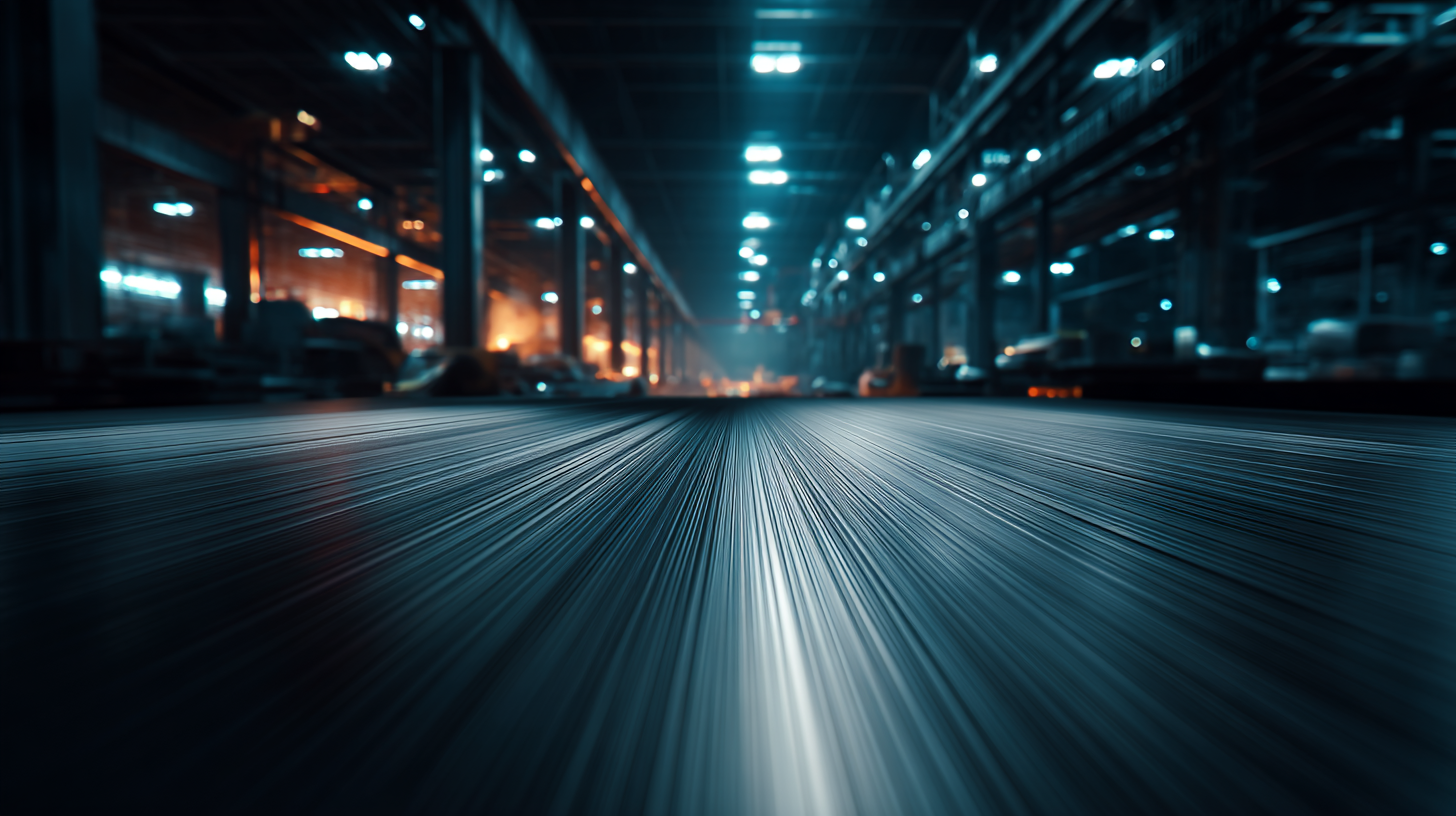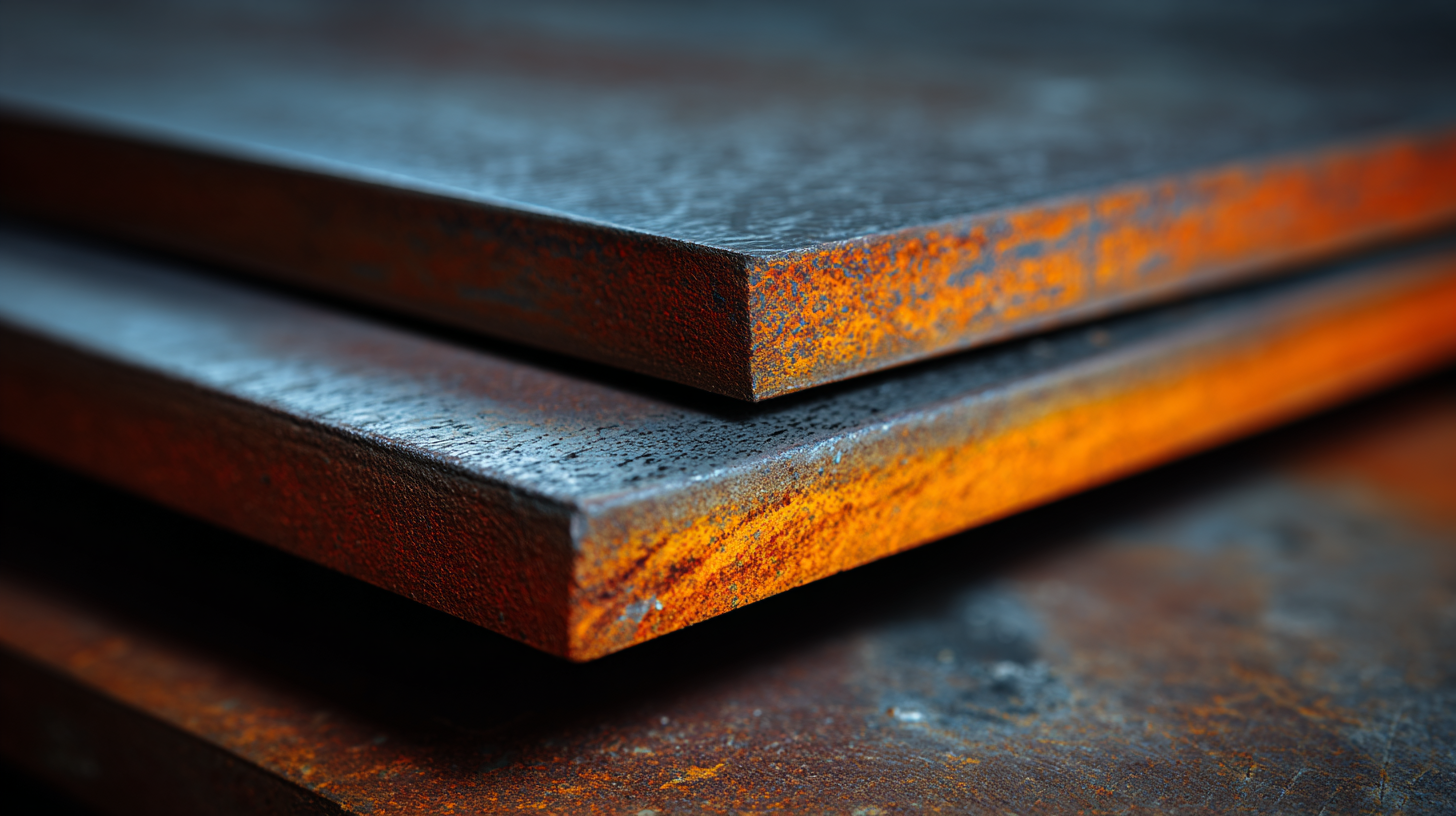Leave Your Message
-
Phone
-
E-mail
-
Whatsapp
As the global steel industry continues to evolve, the demand for high-quality Steel Sheet remains paramount, with the market projected to reach approximately 1.5 billion tons by 2025, according to the latest market analysis. This growth is driven by increasing applications across various sectors, including automotive, construction, and manufacturing. However, traditional steel production methods face challenges, such as environmental concerns and fluctuating raw material costs. In response, industry innovators are exploring alternative materials and advanced technologies that not only maintain the qualities of Steel Sheet but also offer enhanced sustainability and cost-effectiveness. This blog delves into the promising alternatives that are paving the way for a new era in steel sheet applications, highlighting key developments and trends poised to shape the market in the coming years.

In recent years, the quest for innovative alternatives to traditional steel sheets has gained momentum, driven by the need for more sustainable and efficient materials. A comparative analysis of various materials reveals that bioplastics such as polyhydroxyalkanoates (PHAs) can offer significant environmental advantages. With the pressure of plastic pollution on ecosystems, transitioning to bioplastics presents a compelling option, especially within a circular economy framework where the production methods and end-of-life recyclability are optimized.

Additionally, timber-based construction typologies are emerging as viable alternatives to steel sheets, particularly in carbon emission reduction efforts. Recent studies indicate that these materials can function as carbon sinks, with timber structures demonstrating remarkable carbon storage capabilities compared to traditional reinforced concrete. This is particularly relevant in the context of expanding building practices that prioritize low-carbon outputs, as seen in the innovative design approaches for earthquake-resistant structures tailored to regions affected by seismic activity.
Furthermore, advancements in recycling technologies and materials, such as using thin steel sheets in packaging, illustrate a significant shift towards enhancing the circularity of building materials. This aligns with broader trends in the steel industry, where decarbonization technologies are becoming critical in addressing the carbon footprint associated with steel production. The focus on low-carbon production methods and alternative materials reflects a growing industry consensus on the importance of sustainability in shaping the future of material usage globally.
When evaluating alternatives to traditional steel sheets, performance metrics such as strength, durability, and corrosion resistance become critical factors for global buyers. Strength is often measured by tensile strength and yield strength, which indicate how much force the material can withstand without failing. Innovative materials, such as high-strength alloys and composites, are gaining traction for their ability to offer superior strength-to-weight ratios, making them ideal for applications in construction and automotive sectors.

Durability is another essential metric that should not be overlooked. Buyers must consider how well a material can endure the rigors of its environment, including mechanical stress and exposure to harsh elements. For instance, galvanized steel offers enhanced corrosion resistance compared to untreated steel, but alternative materials such as aluminum and stainless steel can provide even greater longevity under challenging conditions. These materials not only resist deformation but also exhibit excellent performance in aggressive environments, enhancing their appeal to functionality-driven sectors.
Corrosion resistance is increasingly crucial, especially in applications where materials are exposed to moisture or corrosive substances. While traditional steel requires protective coatings to prevent rust, innovations in surface treatments and protective alloy formulations are evolving. Options like weathering steel and advanced polymer coatings can significantly extend the lifespan of materials, making them attractive alternatives for buyers looking to reduce maintenance costs and enhance sustainability. By focusing on these performance metrics, global buyers can make informed decisions that align with their operational needs and environmental goals.
In the ever-evolving landscape of the steel industry, global buyers are exploring cost-effective alternatives to traditional steel sheets, driven by rising demand and market dynamics. The structural steel market is projected to be valued at approximately $116.56 billion in 2023, with a robust compound annual growth rate (CAGR) of 5.74% anticipated from 2024 to 2031. This growth reflects a broader trend emphasizing the search for high-strength materials with corrosion resistance, notably seen in the market for Fiber Reinforced Polymer (FRP) rebar, which is expected to grow beyond $590 million by 2024 as the material becomes increasingly mainstream.
As companies seek innovative solutions to optimize production costs, the lightweight automobile materials market underscores a critical shift, with a projected CAGR of over 8.2% from 2020 to 2026. This trend is driven by the automotive sector's transition towards electric vehicles, presenting unique opportunities for alternative materials that enhance efficiency without compromising strength.
**Tips:** When considering alternatives to steel sheets, assess the long-term cost implications versus initial investment. Additionally, staying updated with industry reports can provide valuable insights into emerging materials that may offer enhanced performance at competitive prices. Prioritizing sustainable options can also align with broader environmental goals while meeting market demands.
This chart illustrates the average price per ton of various steel sheet alternatives over a five-year period from 2018 to 2022. It highlights the cost trends of traditional steel sheets compared to innovative alternatives such as aluminum sheets, composite materials, and galvanized steel.
As global awareness of environmental challenges increases, buyers are seeking eco-friendly alternatives to traditional steel sheets. The manufacturing industry is taking significant steps toward sustainability, which not only reduces carbon footprints but also promotes responsible sourcing of materials. Eco-friendly options, such as recycled steel and advanced composites, emerge as viable contenders. These materials not only minimize waste but also offer robust performance, making them attractive choices for a variety of applications.
Moreover, innovators in manufacturing are exploring the use of bio-based materials and coatings that reduce environmental impact without compromising on quality. These developments are crucial for industries striving to meet sustainability targets and regulatory requirements. Buyers can now make informed choices by assessing the lifecycle of these materials, from sourcing to production and eventual disposal, ensuring a more sustainable and responsible purchasing process. Embracing these alternatives not only benefits the environment but can also enhance the marketability of products in an increasingly eco-conscious consumer landscape.
The global demand for steel sheet alternatives is rapidly evolving, driven by a combination of technological advancements and shifting market needs. According to a recent report by MarketsandMarkets, the global steel sheet market is projected to reach USD 300 billion by 2025, highlighting a growing inclination towards lightweight and high-strength materials. This trend is primarily influenced by industries such as automotive and construction, which are increasingly seeking materials that offer improved energy efficiency and sustainability.
Additionally, innovations in materials such as aluminum alloys and advanced composites are beginning to reshape the competitive landscape. For instance, a study by Research and Markets suggests that the aluminum sheet market is expected to grow at a CAGR of 7.8% through 2024, as manufacturers and consumers seek alternatives that can reduce weight without compromising structural integrity. The rising awareness of environmental concerns also propels this shift, with many companies prioritizing materials that contribute to lower carbon emissions throughout their lifecycle. These trends indicate a significant transformation within the steel sheet alternatives market, prompting global buyers to reconsider their sourcing strategies to stay ahead in an increasingly competitive environment.
| Alternative Material | Properties | Market Demand (2023) | Projected Growth (2025) | Sustainability Rating |
|---|---|---|---|---|
| Aluminum Sheets | Lightweight, corrosion-resistant | 35% of the market | 10% CAGR | A+ |
| Fiber-Reinforced Plastics | High strength-to-weight ratio | 20% of the market | 15% CAGR | A |
| Galvanized Steel | Corrosion-resistant, durable | 30% of the market | 5% CAGR | B |
| Stainless Steel Alternatives | Resistant to oxidation | 10% of the market | 8% CAGR | B+ |
| Composite Materials | Versatile, customizable properties | 5% of the market | 12% CAGR | A++ |
